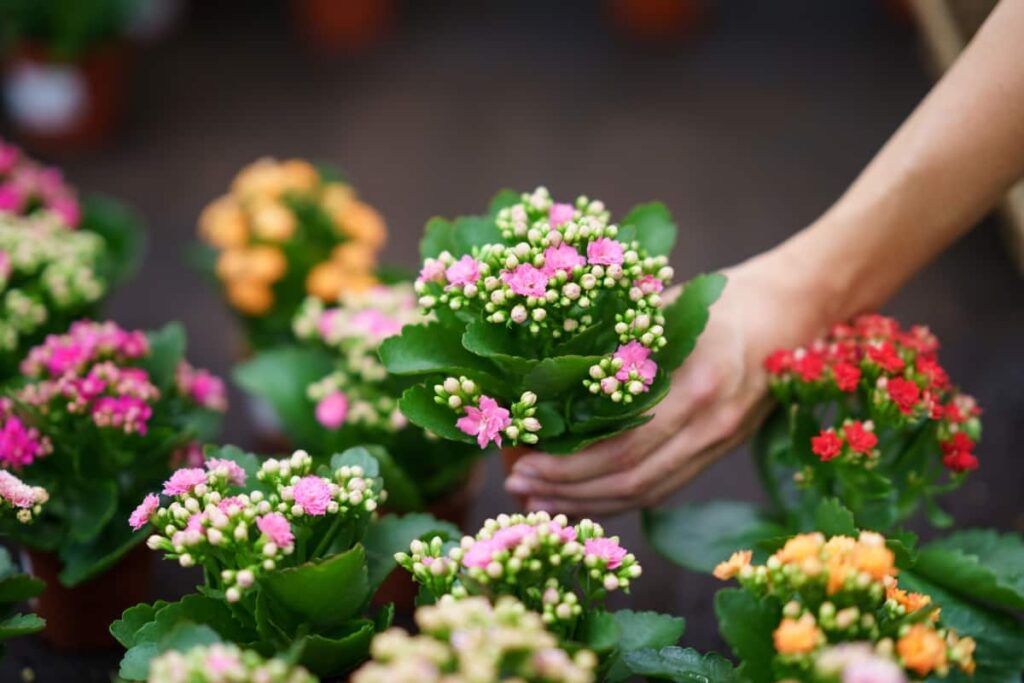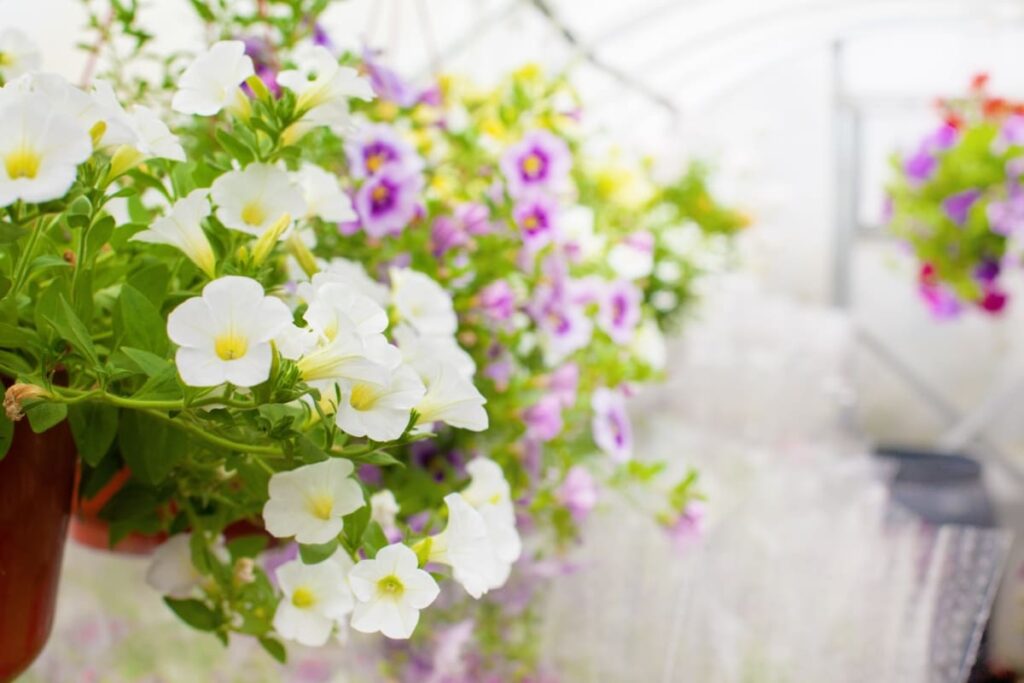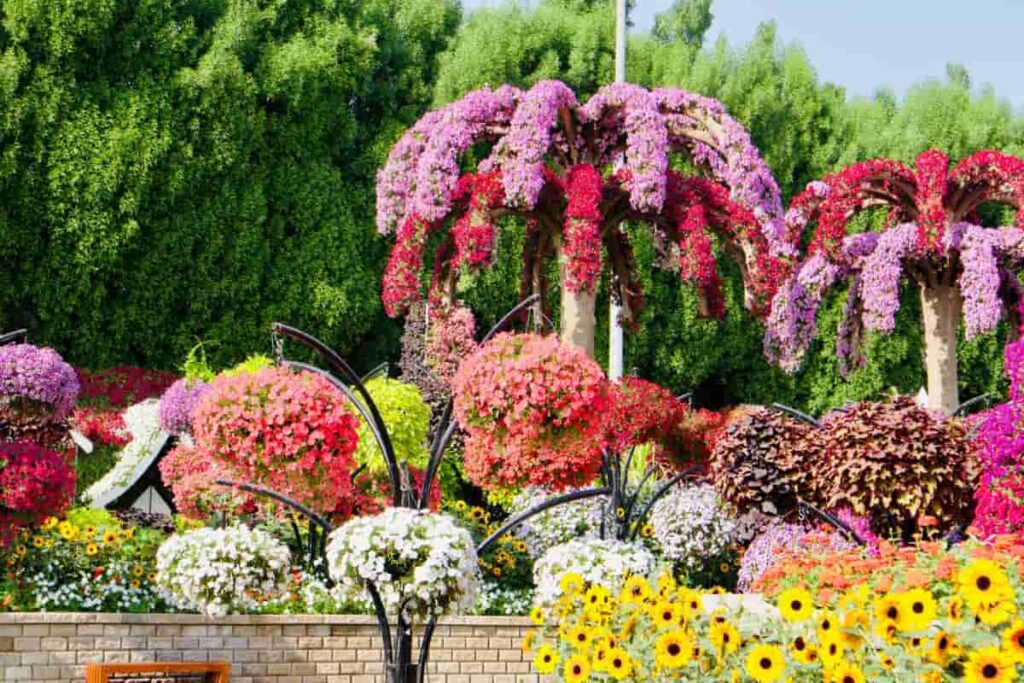Maximizing blooms not only enhances the beauty of your garden but also indicates that your plants are healthy and thriving. Epsom salt is not just ordinary table salt; it contains magnesium and sulfur, which are essential nutrients for plant growth. By incorporating this natural mineral compound into your gardening routine, you can enhance nutrient uptake, support healthy root development, promote stronger stems, increase flower production, and even deter pests.

Using Epsom Salt for Flowering Plants
Enhancing Blooms with Epsom Salt
Benefits for Flowering Plants
The key benefit of using Epsom salt is its ability to enhance blooms. Magnesium promotes chlorophyll production, which is vital for photosynthesis and overall plant vitality. Sulfate aids in nutrient absorption, ensuring that your plants receive the necessary minerals for robust flower development. Whether you have roses, azaleas, or any other type of flowering plant, they will benefit from the added boost provided by this simple yet powerful ingredient.
The Right Mix: Epsom Salt Solutions
Preparing Epsom Salt for Your Garden
First, make sure you have high-quality Epsom salt on hand. Look for a brand that is pure and free from additives or fillers. This ensures that you are giving your plants only the best. To prepare your Epsom salt solution to maximize blooms, start by dissolving it in water. The general rule is to use 1 tablespoon of Epsom salt per gallon of water. Make sure to stir well until all the crystals are fully dissolved. This will ensure an even distribution throughout the solution. Once your solution is ready, it’s time to decide how you want to apply Epsom salt to your flowering plants.
Application Methods for Flowering Success
Foliar Spray vs. Soil Application
Foliar spray involves mixing Epsom salt with water and spraying it onto the plant leaves. This method allows the plant to quickly absorb the magnesium sulfate through its foliage, providing immediate benefits. On the other hand, soil application involves adding Epsom salt to the soil around your flowering plants. This method allows for the gradual absorption of nutrients by the roots over time. It’s best suited for long-term nourishment and can help prevent future deficiencies.
To apply Epsom salt via foliar spray, dilute 2 tablespoons of Epsom salt in water about 1 gallon and spray evenly on all sides of the leaves until they are wet but not dripping. For soil application, mix 1 tablespoon of Epsom salt per gallon of water and pour around the base of each plant, being careful not to oversaturate.
Timing Your Epsom Salt Applications
Seasonal Tips for Flower Gardens
Proper timing is important to using Epsom salt in your flower garden. Each season presents different opportunities and challenges, and understanding when to apply this natural remedy can make a significant difference in maximizing blooms. In the spring, as plants emerge from their winter slumber, it’s an ideal time to give them a boost with Epsom salt. Applying Epsom salt early on allows magnesium to be readily available during critical stages of plant development.
In case you missed it: How to Increase Flowering in Jasmine: Blooming Secrets to Boost Flowering in Jasmine

During the summer months, continuous application of Epsom salt to maximize blooms every 4-6 weeks can help maintain plant vigor and enhance flowering potential. As fall approaches and temperatures cool down, it’s time to focus on root development. Winter is generally not the best time for fertilization since most plants are dormant at this stage. However, if you have indoor flowers or potted plants that continue to bloom throughout winter, consider adding some diluted Epsom salt solution sparingly.
Flowering Plants that Thrive with Epsom Salt
Roses, Azaleas, and Beyond
Roses have long been known to benefit from the use of this amazing mineral compound. Not only does it provide much-needed magnesium to help promote healthy growth and vibrant blooms, but it also aids in the absorption of other essential nutrients. Azaleas are another type of flowering plant that can greatly benefit from the use of Epsom salt.
By adding a solution of Epsom salt to the soil around your azaleas, you can encourage stronger root development and more abundant blooms. Many other types of flowering plants like Dahlias, hydrangeas, and petunias can also reap the rewards of using Epsom salt in their care routine. The key is understanding each plant’s specific needs and adjusting your application methods accordingly.
Symptoms of Magnesium Deficiency in Flowers
When to Apply Epsom Salt
Magnesium plays a major role in the overall health and development of flowering plants. Without an adequate supply of magnesium, flowers may start exhibiting signs of deficiency. Keep an eye out for yellowing leaves, particularly on older foliage. The discoloration typically starts at the leaf edges and gradually spreads throughout the plant.
In addition to yellowing leaves, you might also notice stunted growth and reduced flower production. To address this issue, it’s important to apply Epsom salt as soon as you spot these symptoms in your flowering plants. When applying Epsom salt, make sure to follow the dosage guidelines based on the size and type of your plants. It’s always better to start with a lower concentration and gradually increase if necessary.
Epsom Salt Dosage Guide for Flowering Plants
How Much and How Often
By using Epsom salt in your garden, knowing the right dosage is crucial for maximizing blooms in your flowering plants. Too little may not provide the desired effect, while too much can be harmful. Consider the size of your plant. For smaller flowering plants like annuals or perennials, Epsom salt, about a tablespoon dissolved in water, will suffice. Larger plants, such as roses or hydrangeas, may require up to two tablespoons. In terms of frequency, it’s best to apply Epsom salt every 4-6 weeks during the growing season. Remember that each plant has different needs and tolerance levels.
Combining Epsom Salt with Other Fertilizers
Creating a Balanced Nutrition Plan
When selecting additional fertilizers to pair with Epsom salt, consider the specific nutrient needs of your plants. Organic options like compost or well-decomposed manure provide essential nutrients and also improve soil structure and fertility. Synthetic fertilizers formulated specifically for flowering plants can also be used in conjunction with Epsom salt to create a comprehensive feeding regimen.
To avoid over-fertilizing, always follow the recommended dosage instructions for each fertilizer product. A mix of different fertilizers may require adjustments in application rates to maintain balance and prevent nutrient deficiencies or toxicities. Regular monitoring of plant health is vital when combining multiple fertilizers.
Monitoring Plant Health After Epsom Salt Use
Signs of Improvement and Vigor
The main sign to watch out for is improved foliage color. If you notice that the leaves have become greener or more vibrant in color, this is a positive indication that the plants are thriving. Additionally, look for increased leaf size and overall plant vigor. Another sign of improvement is an increase in flower production. With regular applications of Epsom salt to your flowering plants, you may observe more buds forming and a greater number of blooms opening up on your plants.
In case you missed it: Everything You Want to Know About Blooming Season of Lily Flowers

This can make your garden burst with colorful beauty. It’s also important to monitor any improvements in disease resistance. Magnesium plays a crucial role in boosting a plant’s immune system, making it less susceptible to common fungal diseases like powdery mildew or black spot. Keep an eye out for reduced instances of these diseases after using Epsom salt. Additionally, pay attention to any changes in nutrient uptake by observing the overall health of your plants.
Common Mistakes to Avoid
Ensuring the Best Results for Your Flowers
- Overuse: While Epsom salt can be beneficial for your flowers, using too much of it can harm them. It’s important to follow the dosage tips and not exceed them.
- Incorrect application: Applying Epsom salt directly onto the leaves or flowers of your plants may result in burning or damage. Instead, opt for applying it to the soil around the base of your plants.
- Lack of monitoring: After applying Epsom salt, it’s crucial to monitor your flowering plants closely for any signs of improvement or potential issues such as nutrient deficiencies or overfertilization. Adjustments may need to be made based on how your plants respond.
In case you missed it: 10 Best Compost Brands for Flowering Plants in India: Organic, Natural, and Quality Compost Brands

Conclusion
Epsom salt contains two essential nutrients such as magnesium and sulfate, that play a major role in plant growth. By incorporating Epsom salt into your garden care, you can enhance the blooming process of flowering plants. Additionally, it assists with pollen development and pollination, leading to an increased fruit set for certain flowering plants.
- Budget Friendly Sheep Shed Ideas: Cheap and Low-Cost Tips
- How Much Do Cattle Farmers Make: Revenue Streams in Cattle Farming
- Management Pests and Diseases in Your Cotton Field
- Sheep Farming Business Plan for Beginners
- Aquaponic Farming at Home: A Step-By-Step Guide
- Profitable Village Farming Business Ideas in 2024
- High-Yield Aquaculture: Fast-Growing Fish for Farming
- Effective Fish Pond Construction Techniques for Beginners
- Irrigation and Water Management in Pineapple Farming
